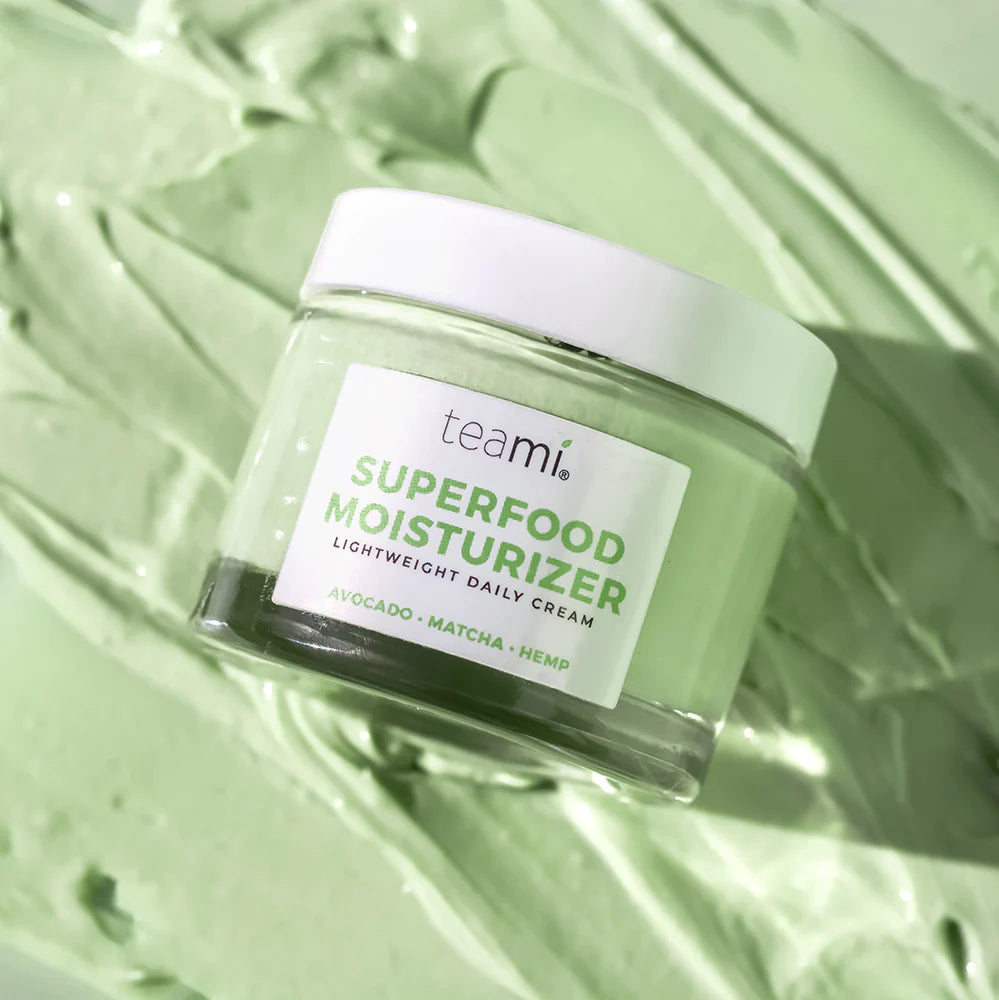Clay Masks vs. Peeling Masks: Which Does Your Skin Need?

Clay and peeling masks give you some targeted services for your skin problems. You're helping your skin by picking the right mask for oil control and for exfoliation or hydration. You can achieve a great and healthy glow with the perfect mask that works for you.
These masks can also change your regular skin care schedule by tackling your preferences. From purifying your pores to gently shedding dead cells, each mask type has its own benefits. You should start with your skin type and your expected results and check your ingredient preferences when picking between clay masks and peeling masks.
Let's talk about this a bit!
Clay Masks For Deep Cleansing
Clay masks can act like small magnets that pull the dirt and the oil straight from your pores. Your face will feel as if it just had a deep cleaning because these masks suck up the excess oil and the bacteria that usually cause breakouts.
Natural ingredients like bentonite and kaolin clay work as absorbent efficient sponges to get that grime out. You'll actually see the oil being attracted out as the mask dries on your face - it's cool to watch! The mask feels smooth and relaxing on your skin, and then it can become tighter.
Your face will feel a little stiff and tingly because that's what should happen. Your oily or combination skin will love these clay masks. The annoying oil that shows up on your forehead and your nose by lunch won't stand a chance. Your pores will appear smaller, and your skin will feel soft and smooth after just one treatment.

These masks can leave your skin feeling parched or irritated if you use them too frequently. You should apply a clay mask once or twice a week, even if you have very oily skin. Scientists have found that regular clay mask users can see big changes in their skin's oil production.
These masks help strike a great balance between controlling oil and maintaining your skin's natural state. Each clay mask can give something to the table. You can add bonus ingredients like aloe vera or hyaluronic acid to help protect your skin from becoming too dry.
With these additions, clay masks now work well for all kinds of skin types. Even people with drier skin can use them. For sensitive skin, natural clays like kaolin can give you a very gentle and relaxing treatment.
The Benefits Of Clay Formulas
You'll love how clay masks can change up your skincare schedule! These natural powerhouses will grab onto the dirt and the oil and pull the nasty items right out of your pores. Your skin will feel refreshed and so clean after you wash off the mask, just like you went to a mini spa treatment at home.
Clay masks can show their work right before your eyes. Your mask starts changing colors as it dries, and it can show darker places where it pulls out oils or dead skin cells. Your face gets a very-powered vacuum treatment as it clears out the buildup that's been hanging around.
Each type of clay can give something to your skincare game. Bentonite clay works like a magnet for the oil, which makes it perfect if your face has a tendency to get greasy. Kaolin clay uses a gentler strategy, and it can give you a deep cleaning without irritating your sensitive skin.
My first experience with a bentonite clay mask left my skin feeling so fresh and clean that I couldn't keep my hands off my face. My friend wasn't so lucky, though. Her sensitive skin didn't respond well to the strong bentonite clay. Once she switched over to kaolin clay, she finally got that fresh and clean feeling without any irritation.
Clay masks can level up your skincare schedule. Your pores can look smaller, and your skin can seem baby-smooth after just a couple of uses. These masks keep your natural oil production in check, so those annoying pimples might not pop up right before your big plans.

These natural wonders also come with skin-loving minerals that help to protect your face from environmental damage. Clay masks work their magic with a gentle touch on your skin, and they can give you a perfect balance of power and care.
Your sensitive skin will probably love kaolin clay because it's so gentle and can give you just enough of a deep cleaning action. Red clay works for dry skin since it helps to seal in some moisture while doing its work. You can get even more of the hydrating effects by mixing in some honey or a little bit of aloe vera, too.
These natural add-ins will also protect your skin from feeling tight or parched after you take off the mask. For oily skin types, bentonite clay is a good option. Green clay also works for dealing with extra oil, so just make sure that you don't go overboard with either one.
Clay masks are great for removing impurities and dead skin cells that may make your complexion look dull. Think of them as a deep cleanse that also works to calm redness and inflammation. You can maximize your results with clay masks by starting slowly and watching how your skin actually responds.
You might need to try a few different varieties to find the one that works the best. A little tingling is normal while the mask works. But you should wash it off if your skin starts itching or burning.
Masks And Surface Renewal
Peel masks are much less scary than what their name might recommend. These treatments don't just sit on your skin like regular masks - they actually help to lift away the dead skin cells from your face. You can think of them as gentle, skin-friendly sticky tape that works to show the fresh skin underneath.
The peel masks that are made for home use are way more budget-friendly and much easier to manage than the fancy chemical peels that are offered at high-end spas. The natural fruit enzymes from things like pineapple or papaya work naturally to dissolve dead skin. These enzymes are small molecular helpers that can break down the bonds between old skin cells. Your main job here is to match the right formula to your skin's particular needs.

The first time I tried a peel-off mask was completely unforgettable. The purple goop that I smeared on my face made me look like I had stepped out of some sci-fi movie. The mask peeled off in one satisfying sheet to show smooth skin underneath.
My poor roommate nearly jumped straight through the ceiling when she came in and saw me mid-peel. Most peeling masks are gentle on your face, even though there's common anxiety about possible damage or irritation. Some formulas have tackling oily-looking skin or regular breakouts.
Others can help to bring some life back to dull-looking skin. That buildup of old skin cells can sometimes leave your face looking more tired and a bit lackluster. Having some regular peeling sessions can help to freshen your skin up.
Enzyme peels are a great addition when used for sensitive skin. These masks make use of natural ingredients that dissolve dead skin cells gently, so they leave your face soft without causing any unwanted redness.
Peel masks can deliver quick results. After just one use, you'll see your skin looking brighter and feeling much silkier. Your makeup will glide on better since there's no longer a layer of dead skin cells in the way.
The Benefits Of Peel-Off Products
Your first peel-off face mask can give you a satisfying feeling that you'll never forget! These masks have earned their place in the skincare routines and pull out the unwanted debris that's stuck in your pores like a magnet.
Each peel removes dead skin cells and some of the trapped dirt - and even those small facial hairs you didn't realize were there. A quick look in the mirror after one shows noticeably brighter skin. Your complexion looks fresh and renewed since the mask strips away that dull layer of dead cells. Your skin gets deep cleaning action without it feeling dried out or tight.
Some of these masks also pack vitamin C and antioxidants that give your natural glow an extra boost. Peel-off masks work well for tackling those tough blackheads and the problematic areas on your face.

People with oily or combination skin especially love these masks because they visibly shrink pores and balance oil production. Most peel-off masks also have some nourishing ingredients like hyaluronic acid and glycerin. Your skin gets treated to these ingredients while the mask works to pull out impurities.
Dr. Jali, a leading dermatologist, specifically recommends charcoal peel-off masks for anyone with oily skin. Your complexion gets a detox from impurities and excess oil during each use. Their patients can see changes to their skin texture after just one application.
The mask can give you a satisfying and tightening feeling as it dries on your face. Your skin feels refreshed once you peel it all away - almost as if it's taking its first deep breath.
Best Practices For Peeling Options
Face masks will change your skincare schedule, and you have to know how to use them. Some people might get started without learning the basics, and their skin ends up red and irritated instead of glowing and renewed.
Normal to oily skin can get something out of a clay mask once or twice a week. These types of masks can act like small magnets and pull that unwanted grime and excess oil right out of your pores. Your face will feel fresh and renewed after you use it.
You should try to use peel-off masks less frequently than other types of masks (even with their appearance). They're basically like a deep cleaning for your face. That's something you only need every week or two.

Your skin will thank you for doing a quick patch test before you go all in with these treatments. Perfect timing can end up making or breaking your masking session. Clay masks shouldn't get bone-dry or cracky on your face - that just sucks out your skin's moisture and causes more problems than it's worth.
Instead, make sure to wash it off while it still feels a bit damp to the touch. Your technique can also help during mask removal. Lukewarm water and some gentle circular motions work best for clay masks.
For those peel-off varieties, resist the urge to rip them away faster - that's just asking for problems with your skin barrier. Just take it slow and be extra careful around any delicate areas.
Clay masks might work better with some relaxing add-ins. A few drops of aloe vera gel or honey can turn your mask into something much gentler. It's a good option if your skin tends to be on the sensitive or dry side.
Your skin needs to take a break when any signs of redness or irritation start to show. Follow up with some gentle cleansing and moisturizing for a few days. Your skin recovers faster when you aren't putting harsh products on it while it's still trying to heal.
Mask days need their own type of skincare strategy. Your skin doesn't need those exfoliators or acne treatments in the cabinet. The active ingredients shouldn't compete for attention all at the same time.
Finding The Perfect Blend
Your skincare schedule can be just so easy to manage. Your skin naturally changes over time. That's okay. People sometimes stress about how to find the exact right schedule. But just get started with what your skin needs each day and go with that.
You'll probably need to try out some of the different face masks to see what works best for you. That's fine, too. Sometimes, your skin craves a deep clean. Other times, you might need something gentler to help remove dead skin.

The seasons and your skin's changing needs might mean switching up what you use. Your skin might even respond in different ways to the same treatment depending on the time of month or time of year. You can look good when you give your body what it needs.
At Teami, our teas help you sleep soundly, support your health, and feel more energized. Our natural skincare collection will give you that glow you've been wanting. Stop by our shop to find something fresh that your body will love.
Subscribe to our Newsletter
Subscribe to our newsletter and get 10% off your first purchase
 Instagram
Instagram



